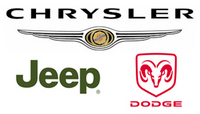Chrysler Faces Tough Road Competing Alone
 |
DETROIT May 15, 2007; Tom Krisher writing for the AP reported that during Chrysler's big-money years of the past decade, the blockbuster hits such as the 300, the new Ram pickup and the funky PT Cruiser drew people into showrooms by the thousands.
The cars were brash, the trucks were tough. They were stylish. And they were worlds different from anything that anyone else was selling. It's that same style that new owner Cerberus Capital Management hopes to revive to make its $7.4 billion purchase of Chrysler pay off.
Even though it is far leaner than it was when Daimler-Benz bought it nine years ago, some analysts wonder whether Chrysler has the allure, the cost structure and the size to compete on its own in a hyperactive global market against the likes of General Motors and Toyota.
Under Daimler's thumb, Chrysler shrank from 126,800 employees in 1998 to around 80,000 today, and it will get even smaller by 2009. Yet the company sold a staggering 373,000 fewer vehicles globally last year than it did the year of the merger. And unlike 1999 -- the first year after the merger when it made $5 billion -- Chrysler is losing a lot of money, reporting a $1.98 billion loss in the past quarter alone.
"It's less survivable as an independent company than it was nine years ago, in my view," said David Cole, chairman of the Center for Automotive Research in Ann Arbor.
Back when Daimler bought Chrysler in what then was billed as a "merger of equals," profits were rolling through the doors of the domestic automakers. Gas was cheap, the economy was booming and people were tooling around in minivans, Jeeps and big Dodge pickups and sport utility vehicles.
Fast-forward nine years to $3 per gallon gasoline and a much stronger presence from Honda Motor Co. and Toyota Motor Corp., and you get an environment that's far tougher on Chrysler and its U.S.-based counterparts, Ford Motor Co. and General Motors Corp.
"The real secret of the 90s was the dominance of the Big Three in light trucks, minivans, pickup trucks, SUVs. They just absolutely thrived," Cole said. "That's not going to happen again. A few companies can't dominate anymore. It's a different world."
Chrysler says it rolled out 10 new models in 2006 and four so far this year, with four more coming later in the year. It now has six vehicles, including some small SUVs, that get more than 30 miles per gallon, when a year ago it had only one.
The company points to Jeep as the harbinger of things to come. At a news conference Tuesday held to explain the Cerberus sale, Chrysler Chief Executive Tom LaSorda said that Jeep sales were up 10 percent so far this year from last.
"The Jeep Patriot and Compass (small SUVs) are helping us to grow the Jeep brand," LaSorda said. The four-door Jeep Wrangler also is selling well, and LaSorda also pointed to the Chrysler Sebring and Dodge Avenger mid-sized models as strengths for the company.
"The Jeep brand has a lot of potential," said Tom Libby, J.D. Power and Associates' senior director of industry analysis. "It's a real sort of jewel for them."
But in order to gain sales volume and market share, Chrysler has to have better entries in the mid-sized car segment, which is 13 percent of the market, Libby said. The Sebring and Avenger, while competitive, aren't good enough in a segment where there are so many strong players, he said.
Chrysler needs "something over and above competitive," according to Libby. "If you don't have a really competitive product there, you're not going to be able to compete share-wise."
When Chrysler was making big dollars in the late 90s, it's five top-selling models were either minivans, trucks or SUVs, most of which come with higher profit margins than cars. Now the company is trying to shift its product line to smaller, more fuel efficient models on which it makes less money.
That means costs have to be cut to become profitable, and analysts say Cerberus will be a force in accomplishing that during upcoming contract talks with the United Auto Workers. During the bargaining, Chrysler will try to reduce its unfunded long-term staff health care liability, which runs into the billions of dollars.
But Cole said that may not be enough, given the global economies of scale that Toyota and now GM are experiencing and Chrysler's relatively small global presence.
While niche brands such as Porsche or BMW can succeed with smaller volumes, Chrysler won't be able to, Cole said.
"When you're in the mainstream part of the product line, it's very difficult for a smaller company, particularly a regional company, to be successful," he said.
Cole said that to survive, Chrysler will have to take on a global partner at some point.
But LaSorda, who will stay in his current job after the sale, said he's confident the company can rebound and compete in a global market.
He notes the automaker's restructuring plan, which he said is working, and the strength of Cerberus' operating executives, whom he can tap if needed. He also said Chrysler would continue to share technology and purchasing ties with Daimler, which will retain 19.9 percent ownership in the renamed Chrysler Holdings LLC after the deal goes through.
Cerberus will own 80.1 percent, turning the company from public to private. Because of that, Chrysler won't have to make short-term decisions to please Wall Street, company officials have said.
"Chrysler has a strong DNA on which to build upon. Our passion, our speed. Obviously our innovation, design and commitment, our lean mind-set," LaSorda said.
"This isn't going to be easy. We're still up against the same economic factors. We're still up against the same competition."
Chrysler Group: http://www.chrysler.com


